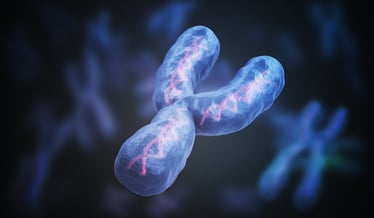eStoreRx™
Online Supplement Dispensary
Easy direct-to-patient ordering & fulfilment for Lifelong Wellness, eStoreRx™ is offered as part of the WholePractice membership or as a stand-alone program.
For over 40 years, Biotics Research Corporation has revolutionized the nutritional supplement industry by utilizing “The Best of Science and Nature”. Combining nature’s principles with scientific ingenuity, our products magnify the nutritional
This inclusive membership contains all of the the tools you need to grow your business, including WholeLifeRx™, Nimativ®, WholeLifeQ™, eStoreRx™ and Practice Success Programs.
Easy direct-to-patient ordering & fulfilment for Lifelong Wellness, eStoreRx™ is offered as part of the WholePractice membership or as a stand-alone program.
April 11 2024
A report on the intake of fish and omega-3 fatty acids among pregnant women in the U.S. was recently published in Public Health Nutrition. This analys...
 A pseudogene has been discovered on chromosome Y of the neurofilament light (NEFL) gene in humans.
A pseudogene has been discovered on chromosome Y of the neurofilament light (NEFL) gene in humans.
The NEFL gene is expressed in the brain among other areas of the body, and encodes one of the three subunits of neurofilaments, or cytoskeletal proteins that make up nerve cells—particularly the myelinated axon portion of nerve cells. Axon damage causes NEFL polypeptides to be released into the cerebrospinal fluid (CSF): the clear, watery fluid that flows in and around the hollow spaces of the brain and spinal cord.
This is significant because higher levels of NEFL are directly related to degeneration of the brain. In fact, elevated levels have been linked to various neurodegenerative diseases, including Alzheimer’s, Parkinson’s disease and atypical parkinsonian disorders, multiple sclerosis and Huntington disease.
Previously, experiments on house mice have uncovered NEFL expression in the adult animals’ brains, as well as five other tissues, and has been associated with the onset and progression of brain lesions. In addition, CSF biomarkers, as well as neuroimaging, and neuropsychological tests, are used in the diagnosis of cognitive decline. However, these markers are often expensive, invasive and not sensitive enough to detect decline during early stages of disease.
Further research into the nature of NEFL could help with disease prognosis and or diagnosis, and continued discoveries in this area could hold hope for those with many different disorders of the nervous system, including Charcot-Marie-Tooth disease types 1F and 2E, which involve progressive muscle tissue and touch sensation loss across various parts of the body.
The fact that a pseudogene, or an imperfect copy of a section of NEFL’s Y chromosome, has been discovered, represents progress in this area of research. Pseudogenes contain biological and evolutionary histories within their sequences, and though not necessarily fully functional, they may perform regulatory functions and many have important roles in normal physiology, as well as abnormal pathology. What stories might this pseudogene tell us about the numerous neurological disorders whose incidence is increasing over time? Stay tuned.
Submit this form and you'll receive our latest news and updates.
More evidence of the likely neuroprotective effect of magnesium was recently published in the European Journal of Nutrit...
Learn moreA study has uncovered the role of serotonin (5-HT) in the evolutionary growth of the human neocortex.
Learn moreFor many, having to quarantine has produced anxiety. One finding in a recent paper published in the Philosophical Transa...
Learn more
*These statements have not been evaluated by the Food and Drug Administration. This product has not intended to diagnose, treat, cure, or prevent any disease.
© 2023 Biotics Research Corporation - All Rights Reserved
Submit your comment